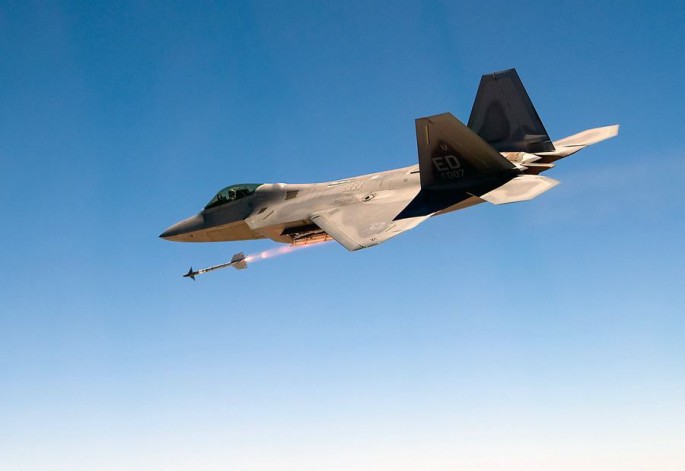Along with outstanding aerial footage, a new promotional video released by the Russian MOD seems to show the use of an Air-to-Air Missile fitted inside the wing root bays.
Russia has been actively working to expand the export potential for their Su-57 aircraft (NATO designation: “Felon”). A new video, just released by the Russian Ministry of Defense on their prolific official social network channels seems to serve that specific purpose: the footage shows the 5th generation aircraft from almost any angle, during taxiing, take off, formation and low level flying, high-g maneuvering and landing. Among all these interesting scenes, you also get a close up glimpse at the IFR (In-Flight Refueling) probe and, above all, at what appears to be the right side weapons bay.
In fact, the aircraft is equipped with two triangular-shaped canoe-like bays outboard of the air intakes with door that would open to fire an AAM during combat. The use of the inside weapons bay would allow the aircraft to keep its LO (Low Observability) in combat.
The video shows the missile already outside the weapons bay but this is probably due to the fact that a launcher extends the missile into the airstream from the clamshell-like doors.
“As we were looking at the static display Su-57 and watching the flight demos, a number of photographers remarked that no one had seen the weapons bay opened yet. That contrasted with U.S. F-22 and F-35 demonstrations, where a pass with the weapons bay open had been a part of the demonstrations now for years. Understandably, the lack of the open weapons bay pass by the Su-57 at MAKS 2019 created unconfirmed speculation that the weapons bay may not yet be fully operational,” says The Aviationist‘s Tom Demerly, who reported from MAKS Aviasalon last year.
Whatever, what is even more interesting to understand is the type of missile shown in the video. In fact, Russia is believed to be working on a new missile that could fit the Su-57’s side bays. As Tyler Rogoway at The War Zone noted in the past, “it’s a little puzzling trying to figure out how a missile like the R-73 could fit in there. Maybe a specialized missile with a smaller diameter profile is intended for those bays sometime in the future.” What could be a compact missile possibly short and narrow enough to be housed in the side weapons bay emerged last year.
The Chinese J-20 also uses lateral weapons bays with a missile deployment device on the side weapons bay which extracts the selected air-to-air missile and then closes the door to keep the reduced RCS.
Years ago, the first images of the aircraft carrying a PL-10 emerged along with video that showed the starboard intake weapons bay open so that the missile could moved outside the airplane by an ejection system. The door of the bay then closed, leaving the missile outside, but still attached to the airframe.
This arrangement was said to allow the missile to be fired in the shortest time possible without the bay to remain open and affecting the overall RCS (Radar Cross Section).
Another stealth aircraft using side bay doors is the F-22 Raptor. The bays house the canted trapeze that the U.S. 5th generation aircraft uses to put the AIM-9 Sidewinder seeker into the airstream.
As mentioned above, such method requires the stealth plane to fly with the open bay doors for a certain amount of time, a condition that can limit the aircraft performance, maneuverability, and increases the overall plane’s RCS, with a temporary exposure of the aircraft to the enemy radars. Something that can be quite lethal in a Within Visual Range scenario.
The problem is to be partly solved with the use of missiles featuring the Lock On After Launch capability. With this kind of missile the bay doors remain open just the time it is needed to eject the missile into the airstream.










